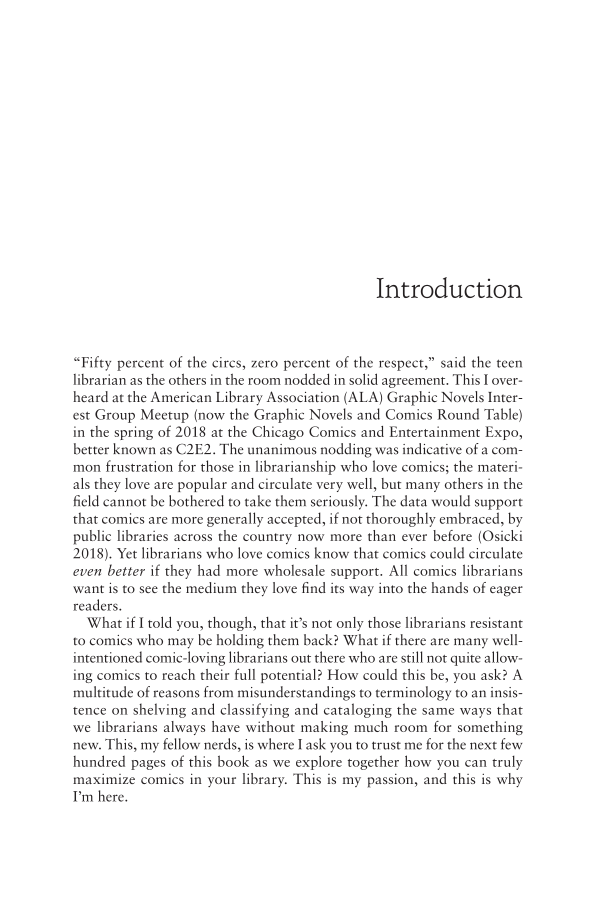Introduction “Fifty percent of the circs, zero percent of the respect,” said the teen librarian as the others in the room nodded in solid agreement. This I over- heard at the American Library Association (ALA) Graphic Novels Inter- est Group Meetup (now the Graphic Novels and Comics Round Table) in the spring of 2018 at the Chicago Comics and Entertainment Expo, better known as C2E2. The unan i mous nodding was indicative of a com- mon frustration for those in librarianship who love comics the materi- als they love are popular and circulate very well, but many others in the field cannot be bothered to take them seriously. The data would support that comics are more generally accepted, if not thoroughly embraced, by public libraries across the country now more than ever before (Osicki 2018). Yet librarians who love comics know that comics could circulate even better if they had more wholesale support. All comics librarians want is to see the medium they love find its way into the hands of eager readers. What if I told you, though, that it’s not only those librarians resistant to comics who may be holding them back? What if there are many well- intentioned comic-loving librarians out there who are still not quite allow- ing comics to reach their full potential? How could this be, you ask? A multitude of reasons from misunderstandings to terminology to an insis- tence on shelving and classifying and cataloging the same ways that we librarians always have without making much room for something new. This, my fellow nerds, is where I ask you to trust me for the next few hundred pages of this book as we explore together how you can truly maximize comics in your library. This is my passion, and this is why I’m here.
Document Details My Account Print multiple pages
Print
You have printed 0 times in the last 24 hours.
Your print count will reset on at .
You may print 0 more time(s) before then.
You may print a maximum of 0 pages at a time.















































































































































































































































































